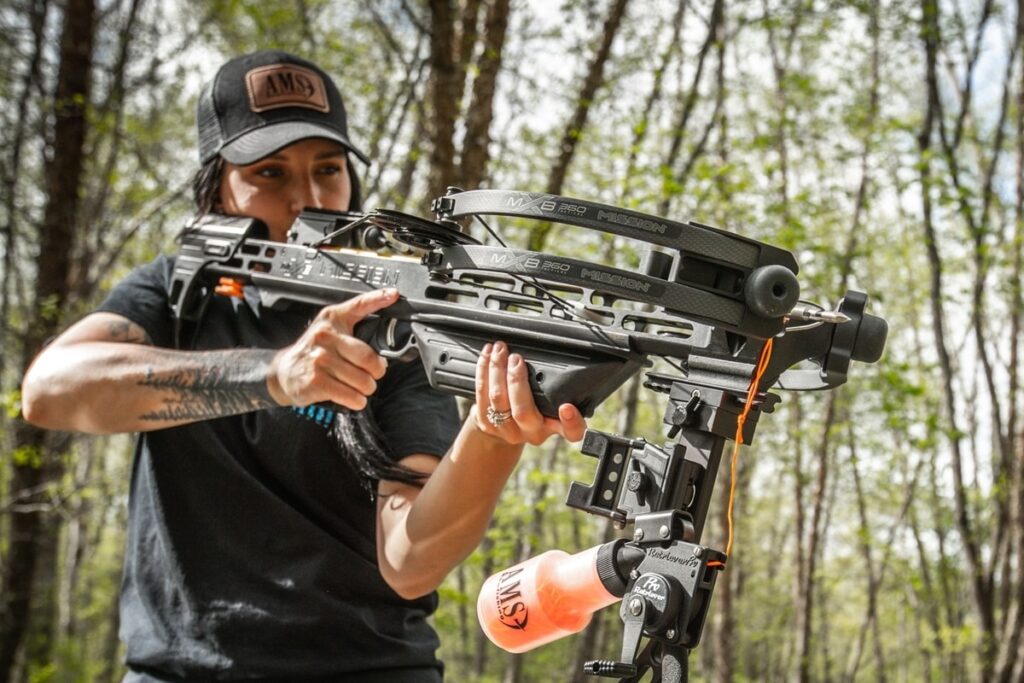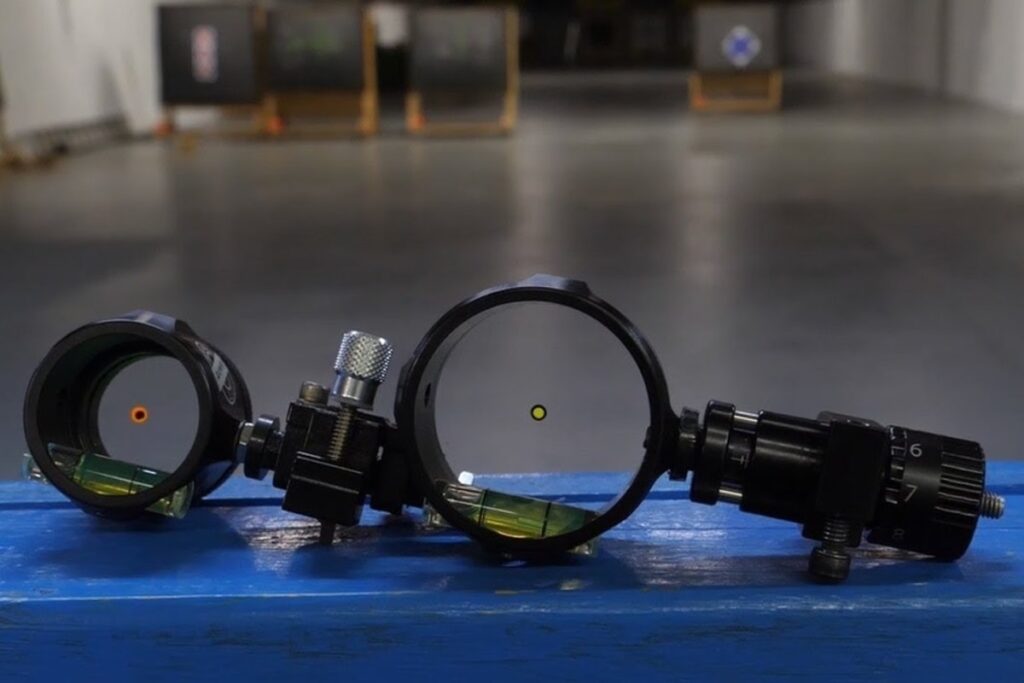Crossbows are very effective tools and have been used since Roman times. They were also known as ‘javelins’ before that period. There is hardly any other tool that can be compared with it when it comes to speed and power.

While they use less energy than bows, their draw length is much longer, so you will need more time to pull them back. The arrows do not travel nearly as far but still pack quite a punch if you know how to use one.
It’s easy to see why this type of archery has become very popular among hunters around the world today.
However, there are some disadvantages associated with using a crossbow during bow hunting. Let us find out what those are…
How to Use a Crossbow for Bowfishing
As mentioned earlier, these types of archers require a greater amount of physical strength on your part. You may feel like you don’t have enough upper body strength to hold such a heavy object while shooting. But the truth is that you must train yourself to handle it properly.
Once you master the techniques involved, you’ll soon realize that it’s no big deal at all. I’m sure you’ve seen people doing some weird things while trying to shoot a gun or even a bow—bending over backward and keeping their arms straight, etc.
1. Holding the Bow Vertically at Arm’s Distance
Well, just imagine someone doing exactly the same thing while pulling a string with his hand! That would definitely give you goosebumps, wouldn’t it? So go ahead and try holding the bow vertically at arm’s distance (about 3-4 feet) and then release the arrow by slowly releasing your grip on the string.
2. Keep a Steady Aim
If you’re able to hit something within range, make sure you keep a steady aim; otherwise, adjust the position slightly downwards. Now repeat this procedure several times till you get accustomed to it. This process helps you build up muscle mass along with your mental skills.
3. Improve Your Performance With Lots of Practice
After practicing this for a few days, you should notice a significant improvement in your ability to hold it steadily without losing balance or jerking movements.
4. Set the Legs About Two Feet Apart
You can now set up a target stand anywhere near where you intend to hunt. Just set the legs apart from each other about 2 feet apart and place them firmly on the ground.
5. Consider the Direction and Velocity of the Wind
Next, put a small stump between both legs, right under the center of the bowstring. Place targets behind them and align your sights accordingly. Make sure you take into consideration the wind direction and velocity too.
6. Draw
Now step away from the target stand and fire towards it. Don’t worry about hitting the target directly because chances are nothing else matters anyway. All you want is to land your shot somewhere inside the target area. As long as you manage to hit something within the target area, you’ll surely score points. Now once again, step forward and aim toward the target. Hold the bow horizontally with your left elbow close to your shoulder joint and let your fingers rest loosely on the trigger.
7. Release
Release the arrow only after sighting down the bowstring towards your target. Keep your eyes focused on the target throughout the entire duration of the shot. Try aiming to hit the desired spot instead of aiming at the front sight itself. By doing so, you won’t miss anything important and waste valuable ammo.
Once you learn to do this correctly and consistently, you’ll soon develop confidence levels that come naturally with experience. Soon you’ll start noticing improvements in your accuracy and consistency level.
Advantages of Crossbow Bowfishing
Using crossbows for bow fishing comes with lots of advantages. Here are some of our favorites:
1. Delivers Accurate Shots
One major advantage of using a crossbow during bowfishing is that it tends to deliver accurate shots faster than traditional bows.
2. Offers Better Control
Also, they provide better control due to the larger surface area covered by your palm. When you move your wrist down to cock the bow, it becomes easier for you to turn the grip quickly.
3. Easy to Carry
Another great feature of crossbows is that you can carry two different ones simultaneously. One can stay cocked while another gets loaded with an arrow.
If your first arrow misses the mark, simply switch over to the second one and continue firing off until you finally strike the target. A good practice is to wear thick gloves while handling a crossbow because it is difficult to maintain proper form unless you do so.
4. Lightweight
Another plus point is that these types of bows are relatively lighter in weight than regular bows. Hence, you can easily transport them and bring them wherever you plan to go.
Disadvantages of Bowfishing With Crossbow
When we talk of disadvantages, there are a couple of factors that might hamper our performance.
1. Most Manufacturers Design Crossbows With Shorter Draw Lengths
The first is the fact that most manufacturers design crossbows with shorter draw lengths than conventional bows.
Most beginners prefer longer draw lengths because their muscles are fresh and strong enough to withstand the pressure generated when the bowstring releases suddenly. On the contrary, experienced shooters prefer short draw lengths because they understand that sudden release results in loss of precision and hence a lesser chance of scoring.
2. A Bit Noisy When Released
The second disadvantage of crossbows is that they create noise whenever released. Since they utilize metal parts, sound waves produced upon impact reverberate through the entire frame, resulting in unwanted vibrations.
Furthermore, the sound intensity increases proportionately with the increased velocity of the projectile. These features together result in poor signal transmission, leading to reduced effectiveness.
If you intend to buy a crossbow for bowfishing purposes, look for models that produce minimal noise and weigh the least possible. Also, check whether the manufacturer offers a lifetime warranty against defects.
3. Recoil Is Inevitable
Since crossbows rely heavily on momentum rather than gravity to launch the projectiles, a recoil effect is inevitable. Recoil isn’t harmful per se, but it creates extra stress on the user’s wrist joints, making it harder for him to handle the bow smoothly. Moreover, crossbows generate higher accelerations, leading to injury risks.
For instance, if you lose your footing and fall onto hard ground, your crossbow could fly off and injure somebody nearby. Or maybe you decide to pick up something lying nearby and inadvertently press the trigger. Your crossbow would release automatically scattering pieces of sharp bolts everywhere.
Although recoils are unavoidable, taking precautionary measures beforehand is highly advisable. Always secure the bowstring tightly in order to prevent accidents like the above. And remember to load the bowstring equally because uneven loading can cause misalignment of limbs affecting overall performance.
How to Set up a Crossbow for Bowfishing
It takes a lot of practice to be able to perform crossbow fishing effectively. Therefore, it is always recommended that you enroll yourself in a specialized training program designed specifically for crossbow fishermen.
Not everyone can afford professional coaching classes, but plenty of books and videos are available online that provide basic information regarding this technique. Follow these steps carefully to ensure maximum efficiency when setting up the crossbow for bow fishing.
First of all, locate the anchor pin located at the top end of the bow. With the help of pliers or screwdriver, remove the pins from the riser section.
Next, loosen the thumb piece and slide it along the shaft upwards till it reaches the lower corner. Then securely tighten it.
Take care that it doesn’t slip off accidentally.
Lower the bowstring towards the rear end until it touches the bottom portion of the riser. Securely fasten it with the anchoring screws provided with the bow.
Check that the strings are not twisted or kinked.
Crossbow Bolts That Are Needed for Crossbow Fishing
The bolts used for crossbow fishing are generally made of lightweight materials like aluminum, carbon fiber, and fiberglass. Their diameter ranges from 1/8th inch to 5/16th inch, allowing users to choose whatever suits best according to the size of fish targeted. Generally speaking, heavier bolts are required to knock down larger prey, whereas smaller bolts work wonders on smaller species.
Wrap Up
We really hope that this article was useful to you. Although it is a little bit different from traditional bowfishing, crossbow bowfishing is not all that different. Though it differs slightly from a bow in certain ways, there might be some particular laws and rules that you should be aware of. To avoid breaking the law, familiarize yourself with the local laws beforehand.

